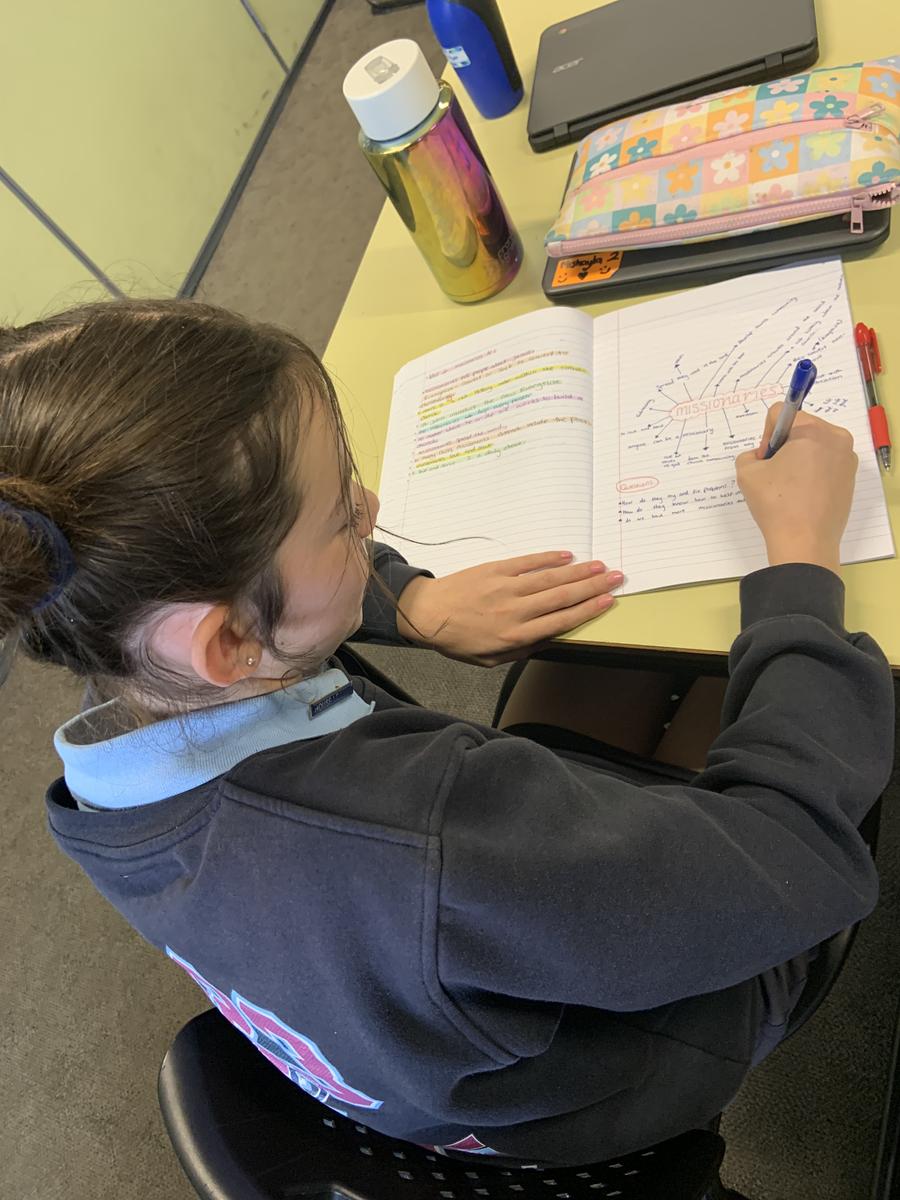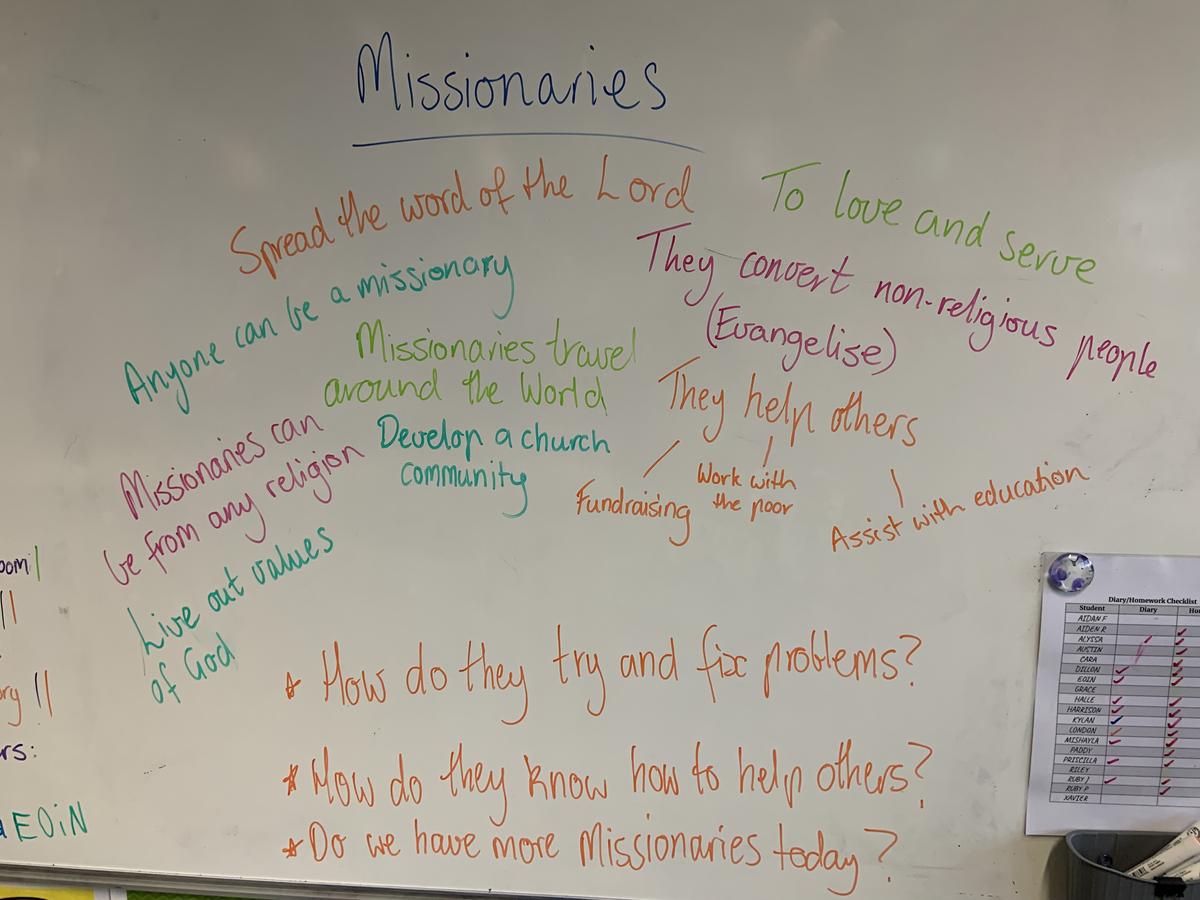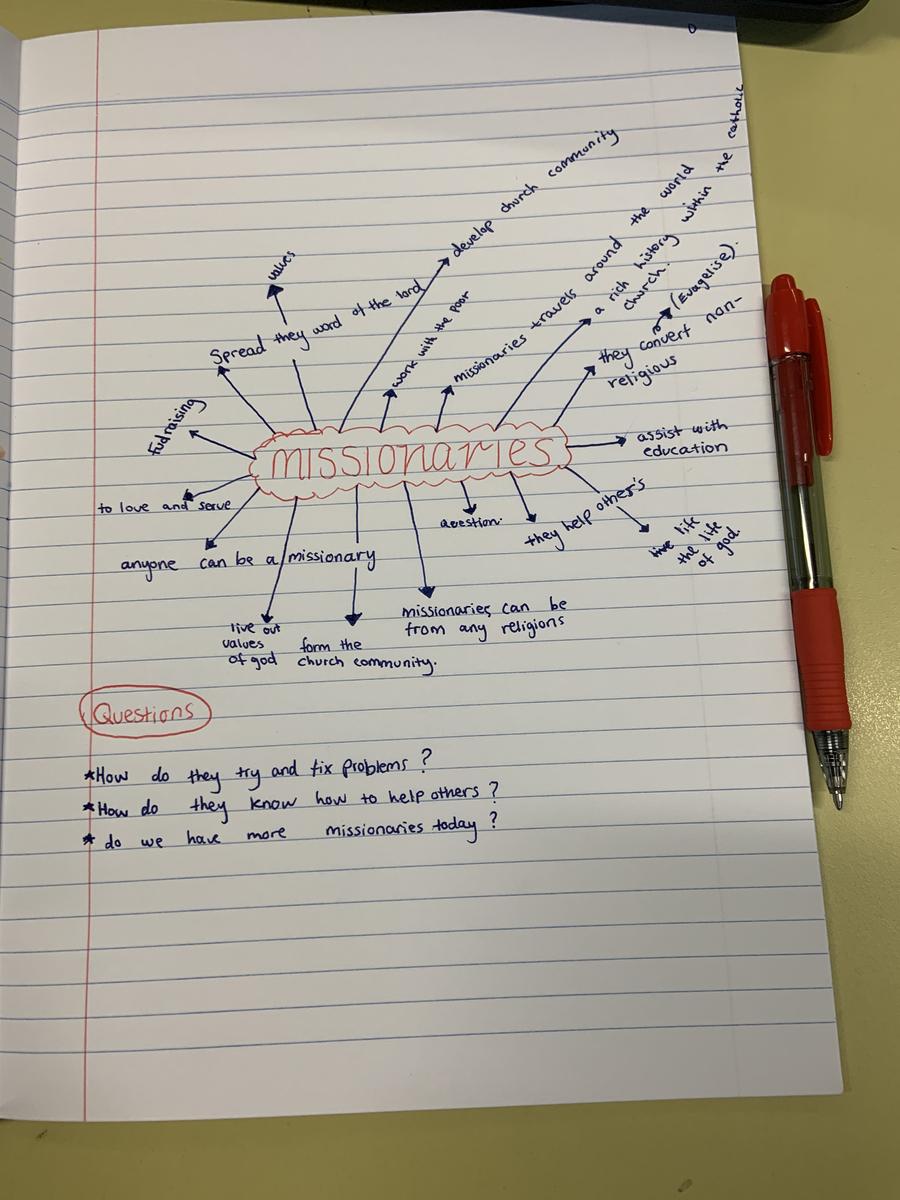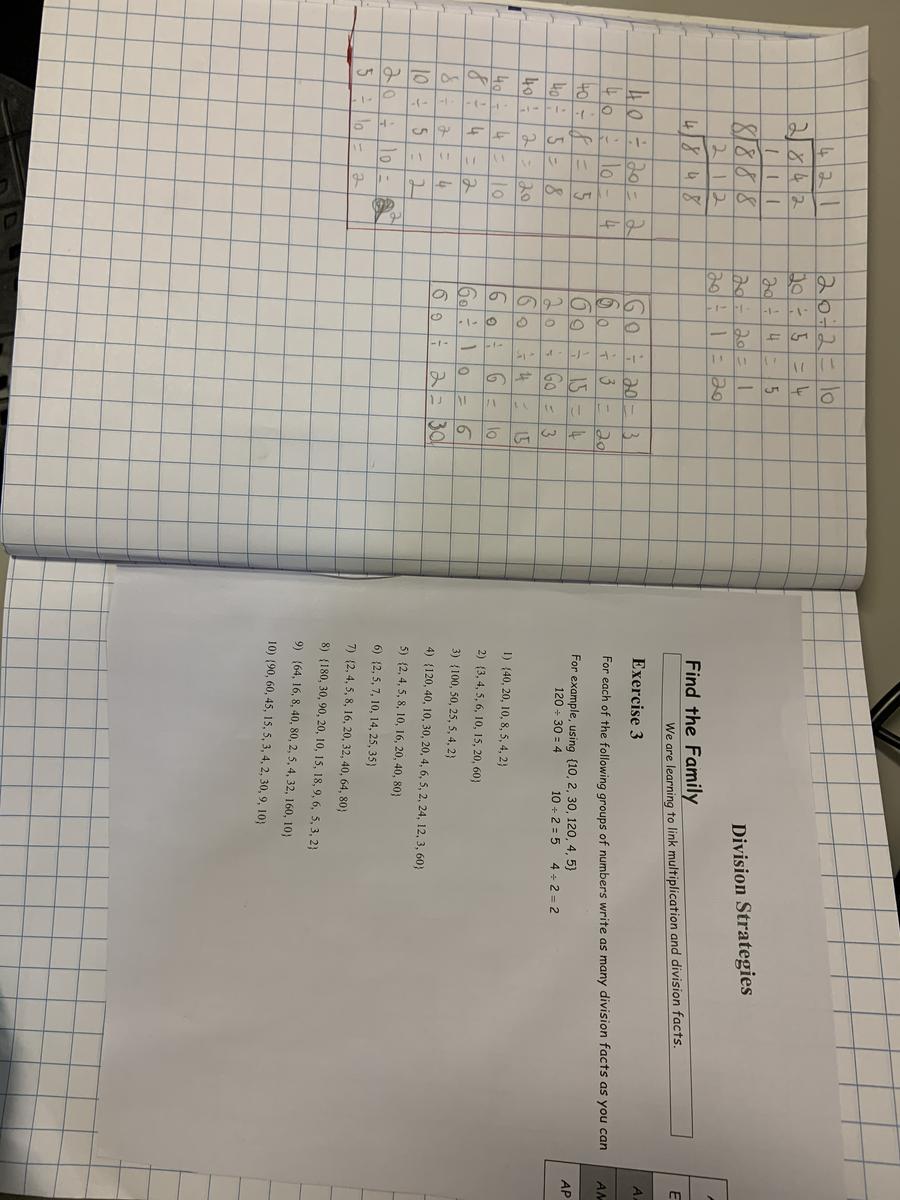Learning & Teaching
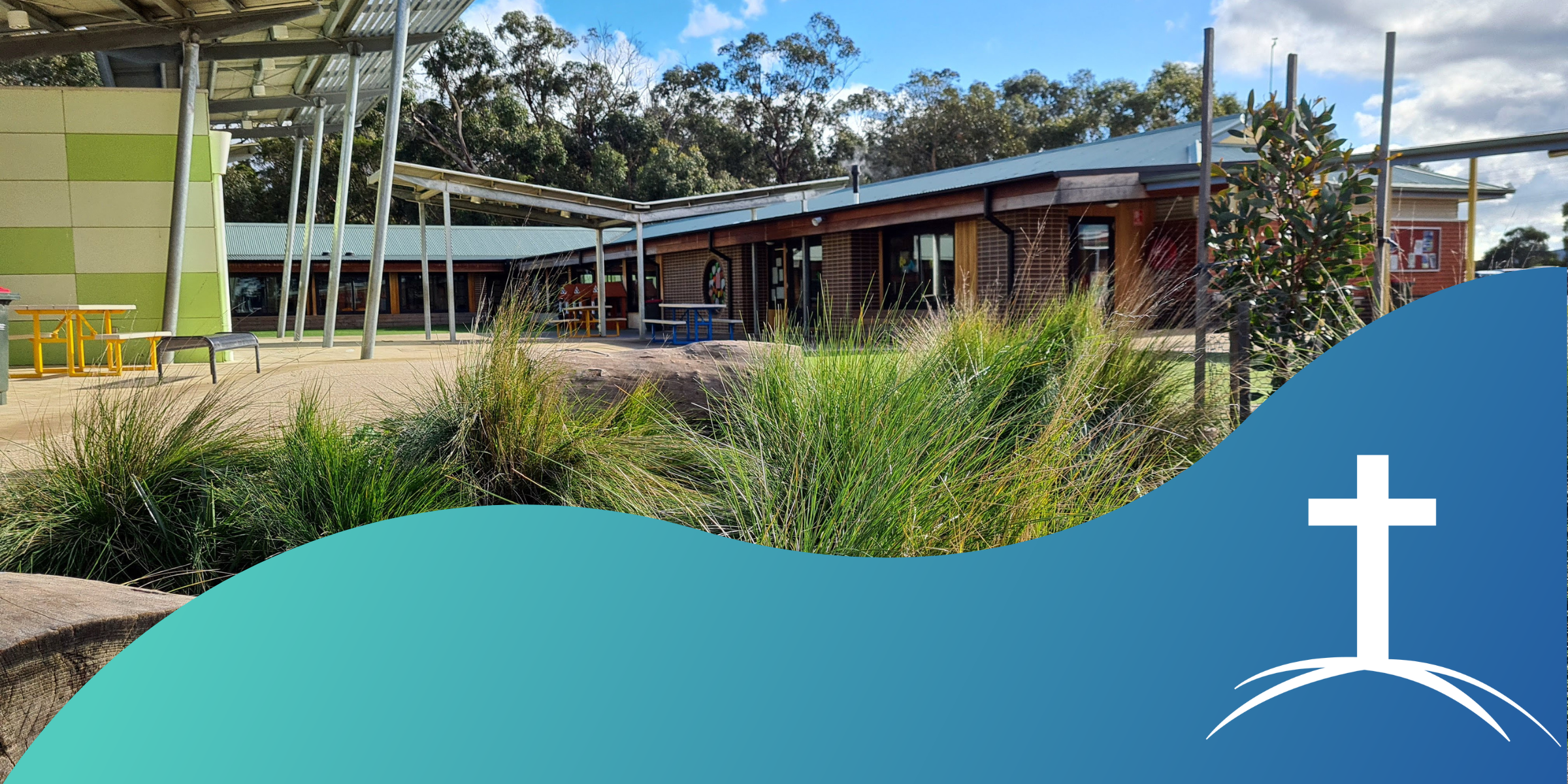
The Power of Modelled Reading in Cultivating Literacy Skills.
Modelled reading involves reading aloud to children while they actively listen to the teacher reading a text. Through this method, teachers demonstrate proficient reading techniques, as well as exposing children to a diverse range of writing styles and text genres. This practice not only showcases the teacher's own reading enjoyment but also builds a sense of purpose to children's reading journey. Additionally, modelled reading serves as a versatile tool to address various literacy aspects, such as print concepts, phonological awareness, phonics, vocabulary, comprehension, fluency and visual literacy. Employed across all year levels, modelled reading forms a crucial element of daily reading programs, further developing children's comprehension, fluency and love for reading.
Year Six's Explore the Impactful Reach of Missionaries
In their Year 6 Faith unit, children have been deeply engaged in the study of missionaries, exploring their impactful work across the globe. This investigation serves as a crucial component of a broader project centered on Church and Community, fostering a comprehensive understanding of the role missionaries play in connecting faith with real-world community initiatives.
Unlocking Spelling Magic in Year One
In Year One, young learners are building their spelling skills through a combination of explicit instruction and interactive activities like puzzles and word-building games. These dynamic literacy lessons encompass a range of strategies, from onset and rhyme to navigating syllables and recognising and representing letter patterns (eg: digraphs) in words.
Year Four: The Relationship between Multiplication and Division
In Year 4 Mathematics, children participated in a challenging task which enabled them to draw out the relationship between multiplication and division. This week's challenge was around fact families in division, employing a select set of numbers. Each set of numbers created the opportunity for a series of division fact families to be identified and recorded (e.g., 40, 20, 10, 8, 5, 4, 2). Children were invited to use each number set to create as many correct division equations as possible to complete a fact family. The challenge: The children could only use numbers from the set to make each equation. Benny and Harry used the number set in the example to make the following equations:
40 ÷ 20 = 2
40 ÷ 10 = 4
40 ÷ 8 = 5
40 ÷ 5 = 8
40 ÷ 2 = 20
40 ÷ 4 = 10
To achieve this, Benny and Harry used their multiplication skills to work out the division equations. For example, Benny knew that 5 x 8 = 40, therefore he also knew that 40 ÷ 8 = 5.
Keep up the excellent work Year 4's!
Year Three: A Valuable Lesson on Values.
In their ongoing History and Geography unit, our Year 3 children have been exploring local values. Employing an array of engaging experiences, including visual analysis, thinking routines, sketching, and hands-on creation of wire artifacts, the children have drawn out a variety of values that resonate within their community—ranging from aesthetics and relaxation to nature, unity, trade, and safety. We look forward to our next lesson where we will conduct further research into the different reasons why people came to the Macedon Ranges across history.


